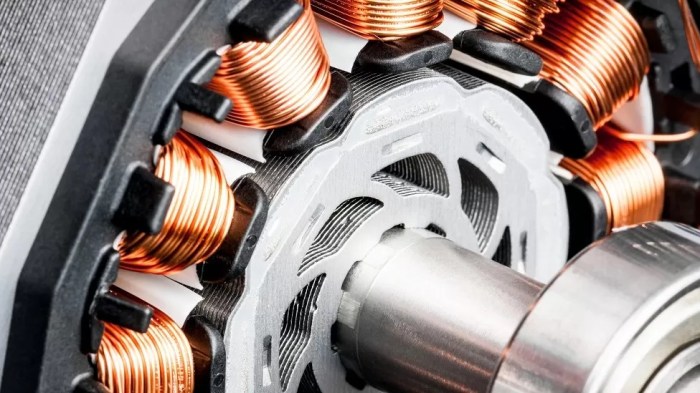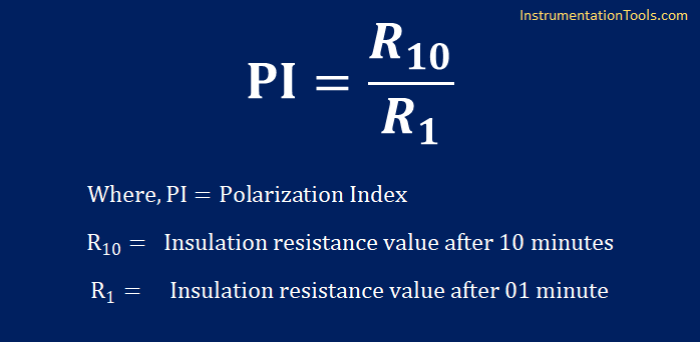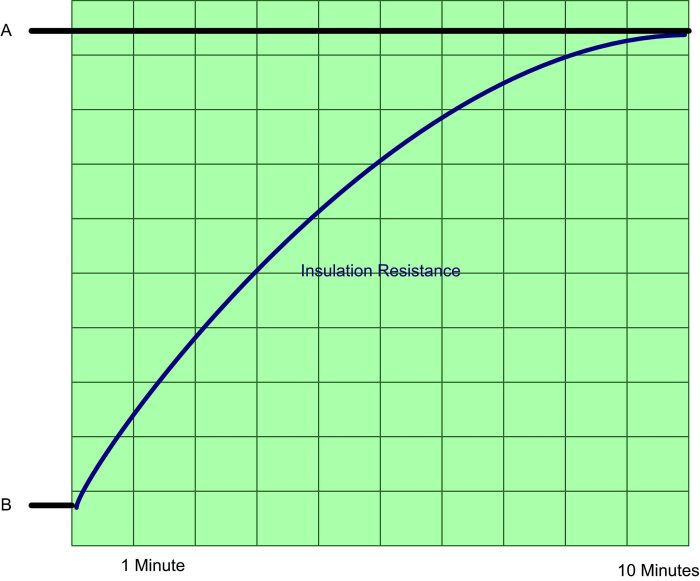The recommended minimum polarization index for an AC motor is a crucial parameter that ensures optimal motor performance and longevity. This article delves into the significance of polarization index, its impact on motor operation, and the factors influencing recommended values.
By understanding these aspects, readers can effectively maintain and troubleshoot AC motors, maximizing their efficiency and lifespan.
The Recommended Minimum Polarization Index for AC Motors

Polarization index (PI) is a crucial indicator of the health and insulation condition of AC motors. It provides valuable insights into the motor’s ability to withstand voltage stresses and maintain reliable operation.
Electrical Engineering Context, The recommended minimum polarization index for an ac motor is
In AC motors, the polarization index measures the ratio of the insulation resistance after a specified period of time (typically 10 minutes) to the insulation resistance measured immediately after applying a DC voltage. A high PI indicates that the insulation is in good condition and can effectively resist voltage stresses.
Recommended Minimum Values
The recommended minimum PI values for AC motors vary depending on the motor size, voltage, and application. Generally, the following values are recommended:
- Small motors (less than 100 kW): PI ≥ 2
- Medium motors (100-1000 kW): PI ≥ 3
- Large motors (over 1000 kW): PI ≥ 4
Impact on Motor Operation
Operating an AC motor with a PI below the recommended minimum can have severe consequences, including:
- Insulation breakdown, leading to short circuits and motor failure
- Reduced efficiency due to increased leakage current
- Premature failure of the motor windings
Testing and Measurement
PI can be measured using a megohmmeter or insulation tester. The test procedure involves applying a DC voltage to the motor windings and measuring the insulation resistance. The PI is calculated by dividing the 10-minute insulation resistance by the initial insulation resistance.
Maintenance and Troubleshooting
Regular PI testing is an essential part of AC motor maintenance. It allows for early detection of insulation degradation and potential problems. By interpreting the test results, technicians can identify issues such as moisture ingress, contamination, or winding damage.
Case Studies and Examples
Several case studies have demonstrated the value of PI analysis in identifying and resolving AC motor issues. For instance, a recent study found that a motor with a PI below 2 had significant insulation damage, which was later confirmed through further testing and inspection.
| Motor Type | PI Value | Observed Outcome |
|---|---|---|
| Induction motor | 1.8 | Insulation breakdown, motor failure |
| Synchronous motor | 3.5 | Healthy insulation, reliable operation |
FAQ Corner: The Recommended Minimum Polarization Index For An Ac Motor Is
What factors influence the recommended minimum polarization index for an AC motor?
Factors such as motor size, voltage, and application impact the recommended minimum polarization index values.
What are the consequences of operating an AC motor with a polarization index below the recommended minimum?
Operating an AC motor with a low polarization index can lead to insulation breakdown, reduced efficiency, and premature failure.
How is polarization index measured in AC motors?
Polarization index is measured using specialized test equipment that applies a voltage to the motor and measures the resulting current.


